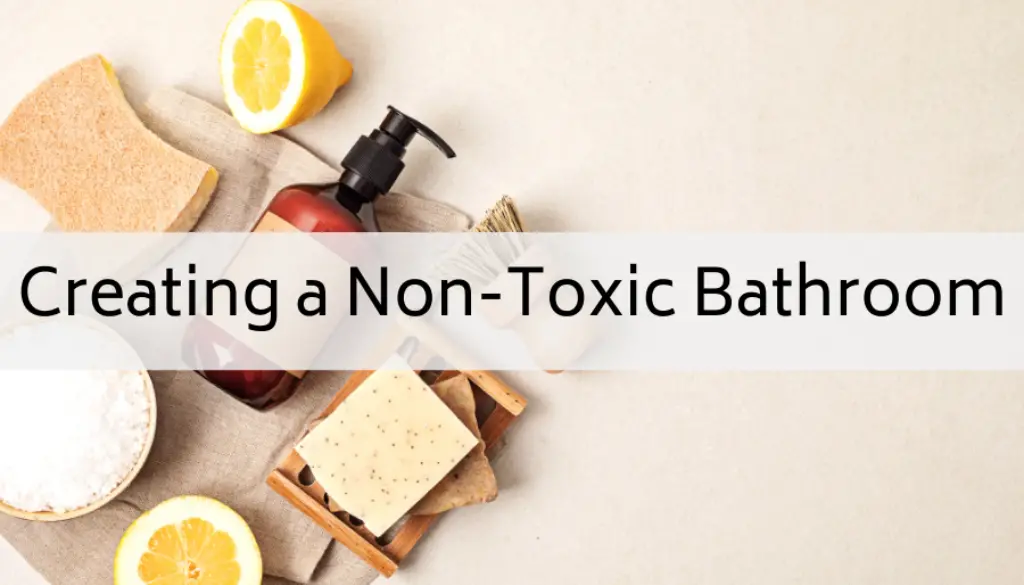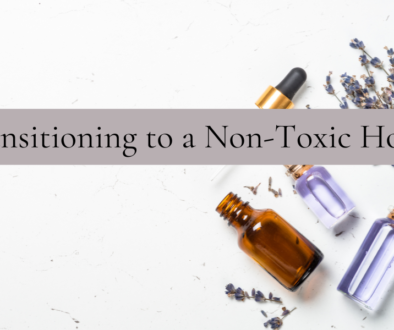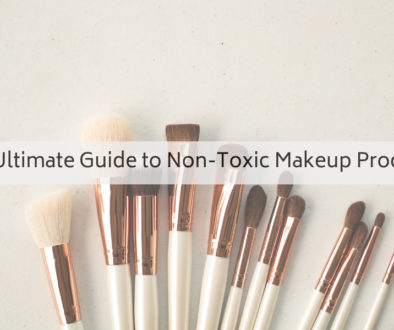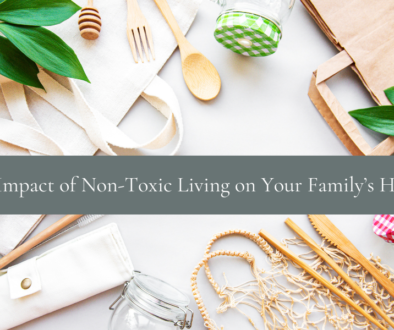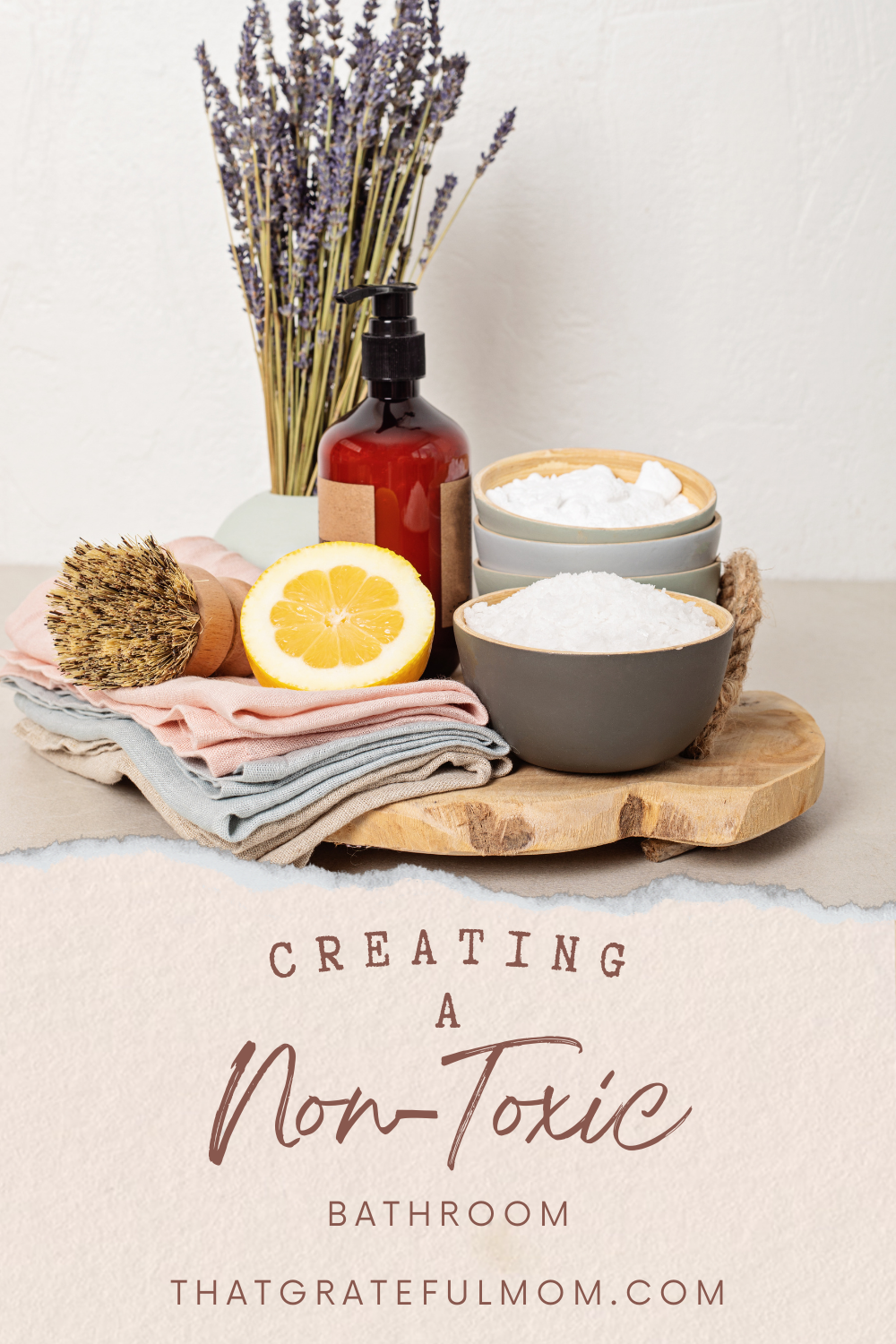
Creating a Non-Toxic Bathroom
Your bathroom may be the smallest room in your home, but it can expose you to dozens of harmful chemicals through cleaning supplies, personal care items, and unsafe water supply. That’s why creating a non-toxic bathroom is so important. In today’s post, I’ll share cleaning swaps, suggestions for safe personal care brands, and improved water quality.
The bathroom hosts harsh chemicals and toxic habits, but creating a non-toxic bathroom is possible by making simple swaps to your habits.
If you’re new to my blog, thank you so much for being here! I’m Michaela, a homeschooling mom of 6, including a cancer fighter. I share about our son’s cancer journey, the changes we’ve made to embrace a non-toxic lifestyle and encouragement for moms.
If you’re interested in learning more about family and the changes we’ve made, here are more posts:
The Ultimate Guide to Non-Toxic Living
Here are some of the topics We’ll cover today:
Why creating a non-toxic bathroom matters
Non-toxic bathroom cleaners
Safer personal care brands
Clean up your water
Water conservation and maintenance

Why creating a non-toxic bathroom matters
Creating a non-toxic bathroom is crucial because it is used often and usually contains many products ranging from cleaning to personal care. Choosing safer cleaning and personal care products is not only important for your health when creating a non-toxic bathroom but for the environment as well. The products we use to clean our homes can contain harmful chemicals that can end up in the sewer system and later into water sources, causing harm.
By opting for safer, more natural products in your home, you can help prevent further harm to your health and contamination of water supplies. I’ll share some safe brands and my favorite homemade cleaning recipes to help you maintain a sparkly, clean, non-toxic bathroom.
Non-toxic bathroom cleaners
I have tried dozens of natural cleaning products on the market and found a few brands I love, but I have ultimately chosen to make as many of my cleaning products myself to help cut back on costs. The brands I have tested are fantastic, but I can still make my cleaning products from scratch for less. Whatever you choose to do is excellent. Just make sure it’s sustainable and you feel good about your decision.
Safe brands for cleaning products:
Thieves from Young Living is a fantastic option for cleaning your home from top to bottom! One bottle of concentrate makes 25 bottles of cleaning solution and costs just $1 per bottle! I love the clean scent and how well it cleans. It is by far the most affordable option I have found for non-toxic cleaning products.
Much like YoungLiving Thieves, you receive a bottle of concentrate and then refill bottles of cleaning supplies from that bottle. It is much pricier than Thieves, and each refill costs around $3-$6, depending on what cleaning product you are making.
The brands I’ve shared are both wonderful options, but the recipes I use for cleaning supplies are safe and even more affordable! I have used them for over 3 years and love their simplicity and effectiveness.
The 3 main products I use to clean my home are vinegar, baking soda, and alcohol. As we all know, vinegar has a strong smell but dissipates quickly. My favorite way to cut the smell is infusing the vinegar with citrus peels or pine needles. It is refreshing and leaves a nice scent as you clean. Add peels or pine needles to a glass jar to infuse vinegar and fill at least halfway. Pour vinegar over the peels or needles, and seal for at least 2 weeks.
Here are my favorite recipes for homemade cleaning supplies:
All-purpose cleaner:
2 Tbsp. in a spray bottle filled with water is excellent for most countertops, tables, and appliances.
Bathroom cleaner:
Baking soda is fantastic when you need scrubbing power, like in the tub or shower. Just pour a little in the tub or shower and scrub away scum and other gunk. For countertops, sinks, and toilets, 1/4th cup of vinegar in a spray bottle with water is the best recipe. I like to use more vinegar in the bathroom to help clean and disinfect.
Floor cleaner:
Add 1 gallon of hot water and 1 cup of vinegar in a mop bucket. No streaks and scrubs through grease and grime!
Window cleaner: in a spray bottle, add 2 Tbsp. of alcohol and fill the rest of the way with water. Spray your windows and wipe dry! If you notice any streaks, using newspaper to wipe dry can help.
Safer personal care brands
Creating a non-toxic bathroom includes swapping out unsafe products for healthier alternatives. It can be overwhelming knowing how to do this. I will share some of my favorites today, but if you’re looking for further suggestions, I have created a kit to help you learn which brands are safest, how to embrace a non-toxic life and stick to a budget. If you’re interested, click here to snag a copy for yourself!
If you are unsure if a brand you use is considered safe, the Environmental Working Group is a fantastic tool for making decisions. It is just that, though- a tool. Remember to research, learn what chemicals are most important to avoid, and do what is best for your home.
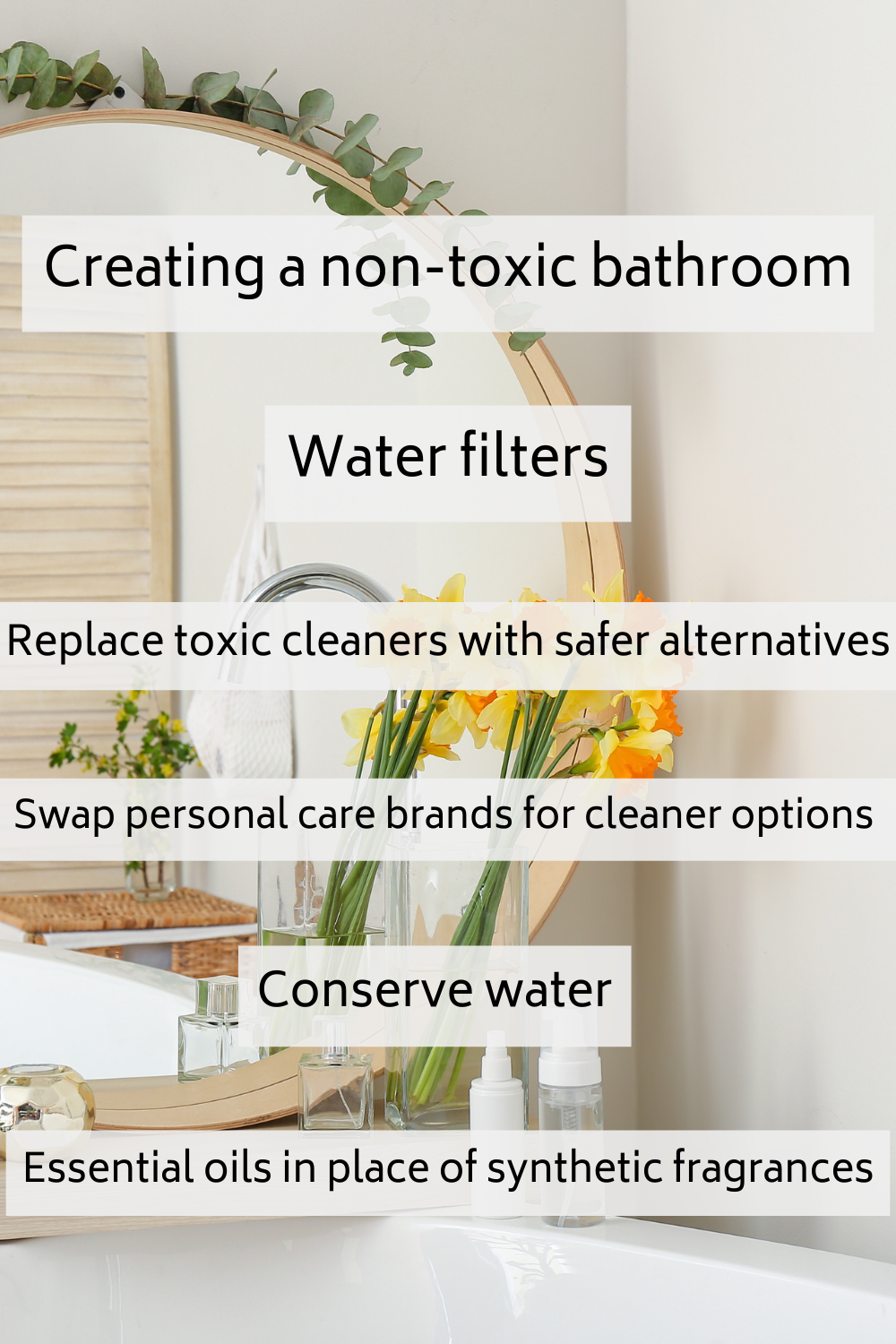
Clean up your water
Another area to consider that is easily overlooked is your water. Our water supply in the US is riddled with forever chemicals, plastics, and heavy metals, all linked to health issues like allergies, cancer, lung disease, and more. It’s frustrating how few regulations are in place, but there are ways to help reduce the amount of these chemicals entering your home.
Here are some of the best water filters available:
Water conservation and maintenance
Part of creating a non-toxic bathroom includes water conservation. Water is a precious resource, and conserving it in your bathroom reduces your environmental impact and can lead to significant cost savings. Consider installing low-flow faucets and shower heads, fix leaks quickly, and aim for shorter showers.
Bathroom maintenance is necessary from time to time. Ensure you check for leaks in faucets and toilets, seal tile when necessary, and replace water filters to protect your family from harm.
Conclusion
It is shocking how many toxic ingredients and harsh chemicals are in cleaning and personal care products, but you can make simple changes in your home to help prevent exposure to those ingredients. Creating a non-toxic bathroom starts with making simple changes and gradually swapping out products you use to clean and care for yourself and your family. If you’re feeling overwhelmed by making changes and knowing how to get started or what to do, it is absolutely okay to make changes gradually and at a speed that you can handle.
I hope this post was helpful to you! If you have started implementing changes in your home and have seen an improvement, please let me know!
Thank you so much for being here. Please remember to share this post with a friend and pin it to your favorite board on Pinterest!
Until next time,
-M
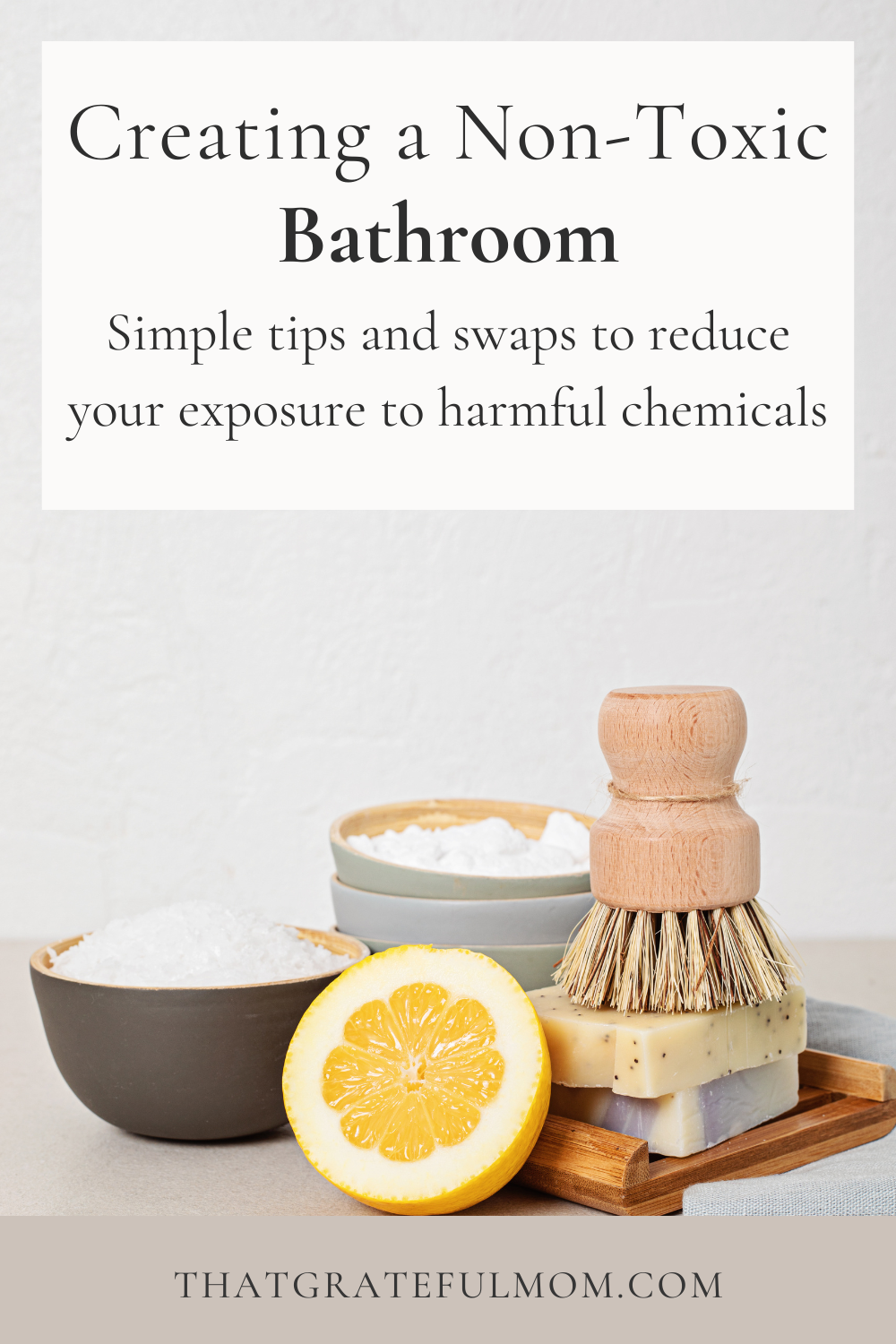
This site may contain links to affiliate websites including Amazon. I may receive an affiliate commission for any purchases made by you through Amazon or other potential affiliates and no additional cost to you. Thank you for your support.

